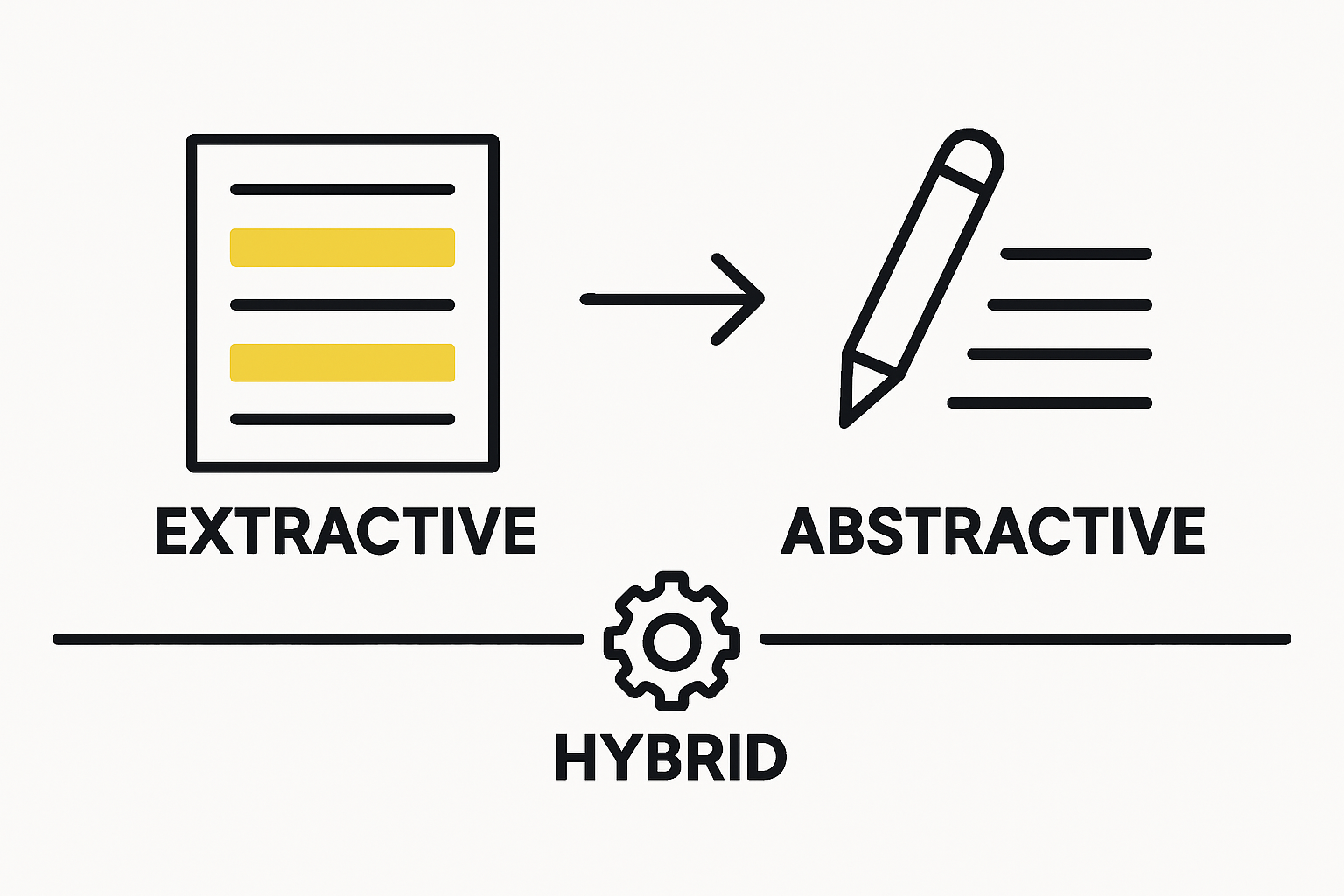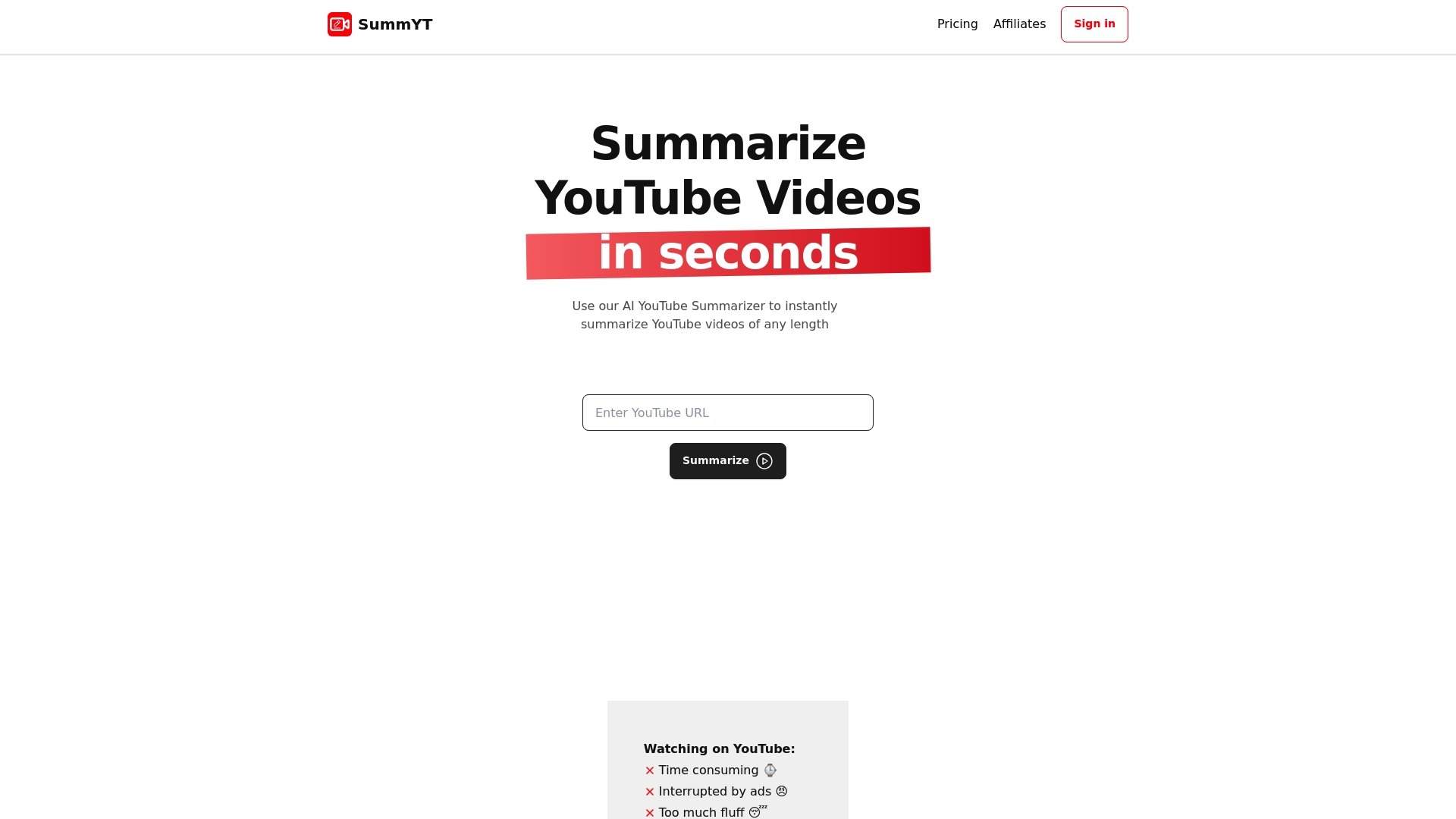Understanding Summarization for Newsrooms

Newsrooms today handle mountains of information every single day. Yet more content does not mean people are reading more and research shows that over 60 percent of news consumers only read headlines or summaries. You might expect this would make things easier for journalists. The surprise is that crafting those concise summaries is actually one of the most complex jobs in the entire newsroom.
Table of Contents
- What Is Summarization In Newsrooms?
- Why Summarization Matters For News Reporting
- How Summarization Enhances News Communication
- Key Concepts Of Effective News Summarization
- Real-World Applications Of Summarization In Newsrooms
Quick Summary
| Takeaway | Explanation |
|---|---|
| Summarization helps combat information overload. | It creates compact narratives that retain critical details for quick understanding. |
| Advanced technologies enhance summarization. | AI and natural language processing are key for rapid and accurate content analysis and extraction. |
| Summarization improves audience engagement. | By reducing cognitive load, it allows readers to comprehend complex stories easily. |
| Effective summarization maintains journalistic integrity. | It preserves context and nuances while delivering concise, meaningful news narratives. |
| Real-time summarization aids in crisis reporting. | It enables immediate dissemination of clear information during fast-paced news events. |
What is Summarization in Newsrooms?
Summarization in newsrooms represents a critical process of distilling complex news content into concise, accurate, and meaningful representations that capture the core essence of journalistic reporting. At its fundamental level, newsroom summarization transforms lengthy articles, interviews, and investigative reports into digestible formats that enable rapid information consumption.
The Purpose of News Summarization
Newsroom summarization serves multiple strategic objectives for media organizations and audiences. Primarily, it addresses the growing challenge of information overload by creating compact narratives that retain critical details. Journalists and editors use summarization techniques to:
- Quickly communicate key narrative points
- Provide readers with rapid comprehension of complex stories
- Enable efficient information distribution across multiple platforms
- Support audience engagement in an increasingly fast-paced media landscape
According to research from Cornell University, professional newsrooms increasingly rely on advanced summarization methods that blend extractive and abstractive techniques. Extractive summarization identifies and preserves original text segments, while abstractive approaches generate new, condensed text that captures the original content’s meaning.
Technological Innovations in News Summarization
Modern newsrooms leverage sophisticated AI and natural language processing technologies to enhance summarization capabilities. These technologies enable rapid content analysis, semantic understanding, and precise information extraction.
Our guide on video summarization for field reporters explores how digital tools are transforming how journalists capture and communicate stories.
The goal of summarization is not merely reduction but preservation of contextual nuance, journalistic integrity, and narrative depth. As media consumption patterns evolve, newsroom summarization becomes an increasingly sophisticated art form bridging comprehensive reporting and audience accessibility.
Why Summarization Matters for News Reporting
In an era of information saturation, summarization has become a critical lifeline for effective news reporting. The exponential growth of digital content demands sophisticated strategies that transform overwhelming information into meaningful, digestible narratives.
The Cognitive Load Challenge
Modern audiences face unprecedented information complexity. News summarization addresses this challenge by reducing cognitive strain and enabling rapid comprehension. By distilling extensive reporting into concise formats, newsrooms help readers:
- Navigate complex global events efficiently
- Understand nuanced stories without extensive reading
- Retain critical information more effectively
- Make informed decisions based on comprehensive yet compact insights
According to research from the Tow Center for Digital Journalism, summarization techniques directly support audience engagement by focusing editorial resources on delivering high-impact, relevant information.
Economic and Strategic Implications
Beyond audience experience, summarization represents a strategic imperative for news organizations. In a competitive media landscape, the ability to rapidly synthesize and communicate information determines journalistic relevance. Our guide on financial report video summarization illustrates how precise summarization can transform complex data into actionable insights.
Newsrooms that master summarization techniques can streamline content production, reduce operational costs, and maintain audience attention in an increasingly fragmented media ecosystem. The goal is not merely information reduction but intelligent, context-rich communication that respects both journalistic integrity and audience intelligence.
How Summarization Enhances News Communication
Summarization represents a transformative approach to news communication, bridging the gap between complex reporting and audience comprehension. By strategically condensing information, newsrooms can deliver more impactful, accessible, and engaging content across diverse media platforms.
Breaking Down Information Barriers
Effective summarization dismantles traditional communication barriers by translating intricate news narratives into clear, concise formats. This process goes beyond simple text reduction and involves intelligent information extraction that preserves critical context and nuance. News consumers benefit through:
- Rapid understanding of complex global events
- Improved retention of key narrative elements
- Enhanced ability to track multiple news stories
- Reduced cognitive load during information consumption
According to research examining news communication strategies, integrating advanced natural language processing techniques enables more sophisticated summarization that captures not just facts, but underlying narrative frames.
Technological Innovations in News Summarization
Modern newsrooms leverage cutting-edge technologies to revolutionize communication strategies. Artificial intelligence and machine learning algorithms now enable more nuanced, contextually aware summarization techniques. Our guide on educational video summarization demonstrates how digital tools can transform complex information delivery.
These technological advances allow journalists to create summaries that are not merely shorter versions of original content, but intelligent, context-rich narratives that respect both the complexity of news events and the audience’s need for rapid comprehension. The ultimate goal is creating a more informed, engaged public through smarter, more accessible news communication.
Key Concepts of Effective News Summarization
Effective news summarization transcends simple content reduction, representing a sophisticated process of intelligent information distillation. This approach requires nuanced understanding of content structure, semantic significance, and audience comprehension needs.
Fundamental Summarization Strategies
News summarization involves two primary methodological approaches that determine content extraction and representation. Journalists and technologists leverage these complementary strategies to create meaningful summaries:

- Extractive Summarization: Directly selecting and preserving original text segments that represent core narrative elements
- Abstractive Summarization: Generating new text that captures the essence of original content using advanced natural language processing
- Hybrid Summarization: Combining extractive and abstractive techniques for comprehensive information representation
According to research exploring multi-document summarization approaches, advanced summarization models are increasingly capable of understanding contextual nuances beyond simple text extraction.
Technological and Cognitive Considerations
Effective summarization requires balancing technological capabilities with human cognitive processing. News organizations must consider multiple dimensions when developing summarization strategies. Our comprehensive guide on types of content summaries provides deeper insights into these strategic considerations.
The ultimate objective of news summarization is not merely to shorten content, but to preserve narrative integrity, maintain contextual richness, and facilitate rapid audience comprehension. By integrating advanced natural language processing with deep understanding of journalistic storytelling, newsrooms can transform complex information into accessible, engaging narratives.
The table below compares the main summarization approaches used in newsrooms, highlighting their methods, strengths, and typical use cases.
| Approach | Method | Strengths | Typical Use Cases |
|---|---|---|---|
| Extractive Summarization | Selects and retains key sentences or phrases directly from the source text | Preserves original wording; fast and reliable | Quick news briefs, factual reporting |
| Abstractive Summarization | Generates new text to encapsulate the original content’s meaning | Produces concise, original summaries; flexibility | Complex stories, nuanced reporting |
| Hybrid Summarization | Combines extractive and abstractive techniques for balanced coverage | Context-rich, maintains nuance; more comprehensive | Multi-source, in-depth news analysis |

Real-World Applications of Summarization in Newsrooms
Newssrooms are increasingly leveraging advanced summarization technologies to transform how information is processed, analyzed, and communicated. These practical applications demonstrate the profound impact of intelligent summarization across various journalistic domains.
Multimedia News Processing
Digital newsrooms utilize summarization technologies across multiple content formats, enabling rapid information synthesis from diverse sources. Journalists now apply summarization techniques to:
- Transform lengthy video interviews into concise text summaries
- Extract key insights from complex investigative reports
- Generate quick briefings from multi-source research documents
- Produce real-time news digests across digital platforms
According to research examining intelligent web-based news aggregation systems, automated summarization enables more efficient news classification and content clustering.
Breaking News and Crisis Reporting
In fast-moving news environments, summarization becomes a critical tool for immediate information dissemination. Advanced natural language processing algorithms help journalists quickly distill complex events into clear, accurate narratives. Our guide on video summarization for field reporters explores how digital tools transform rapid news communication.
These technological innovations allow news organizations to provide audiences with rapid, contextually rich information during critical moments, bridging the gap between complex events and public understanding. Summarization is no longer just a communication strategy but a fundamental mechanism for maintaining informed, responsive public discourse.
This table summarizes key applications of news summarization technologies in digital newsrooms across various content formats and reporting scenarios.
| Application Area | Description | Example Use Cases |
|---|---|---|
| Video Summarization | Converts long-form video interviews into concise text summaries | News interviews, press briefings |
| Report Distillation | Extracts key points from lengthy investigative or financial reports | Financial summaries, investigative digests |
| Multi-source Aggregation | Generates briefings by combining insights from multiple documents | Breaking news roundups, research briefs |
| Real-time Crisis Reporting | Produces live event digests for urgent, evolving news events | Crisis coverage, emergency alerts |
| Content Clustering | Groups and classifies news stories for efficient curation | News platform feeds, topic clusters |
Transform Your Newsroom’s Workflow with AI-Powered Video Summarization
Staying ahead in today’s fast-paced media world means conquering information overload and making sense of hours of video content without wasting precious time. Journalists, editors, and content creators all face the overwhelming challenge of condensing interviews, reports, and news coverage into clear, actionable insights. When every second counts, traditional summarization is not enough. You need tools that deliver rapid comprehension and preserve the heart of your story.

Ready to supercharge your newsroom with the latest in AI-driven summarization? Start using SummYT to instantly transform any YouTube video—news briefings, interviews, webinars, and more—into concise summaries you can use right away. With unlimited summaries for subscribers, multilingual support, and one-click browser access, SummYT streamlines your workflow and lets you focus on delivering impactful journalism. Visit our landing page now to reclaim your time and produce smarter, faster news content. Your newsroom’s next big breakthrough starts today.
Frequently Asked Questions
What is news summarization?
News summarization is the process of condensing complex news content into shorter, more digestible formats while preserving the core essence of the story. This helps audiences quickly understand key points without needing to read lengthy articles.
Why is summarization important for newsrooms?
Summarization is essential for newsrooms as it addresses information overload, helping audiences quickly comprehend complex stories, retain critical information, and engage more effectively with the news in a fast-paced media landscape.
What are the main types of summarization techniques used in newsrooms?
The main summarization techniques include extractive summarization, which selects original text segments, and abstractive summarization, which generates new concise text to convey the essence of the original content. Hybrid summarization combines both methods for a comprehensive approach.
How does technology impact news summarization?
Modern technologies, such as AI and natural language processing, enhance summarization by enabling rapid content analysis and intelligent information extraction. These advancements ensure that summaries maintain contextual nuance and journalistic integrity while making complex information more accessible.



